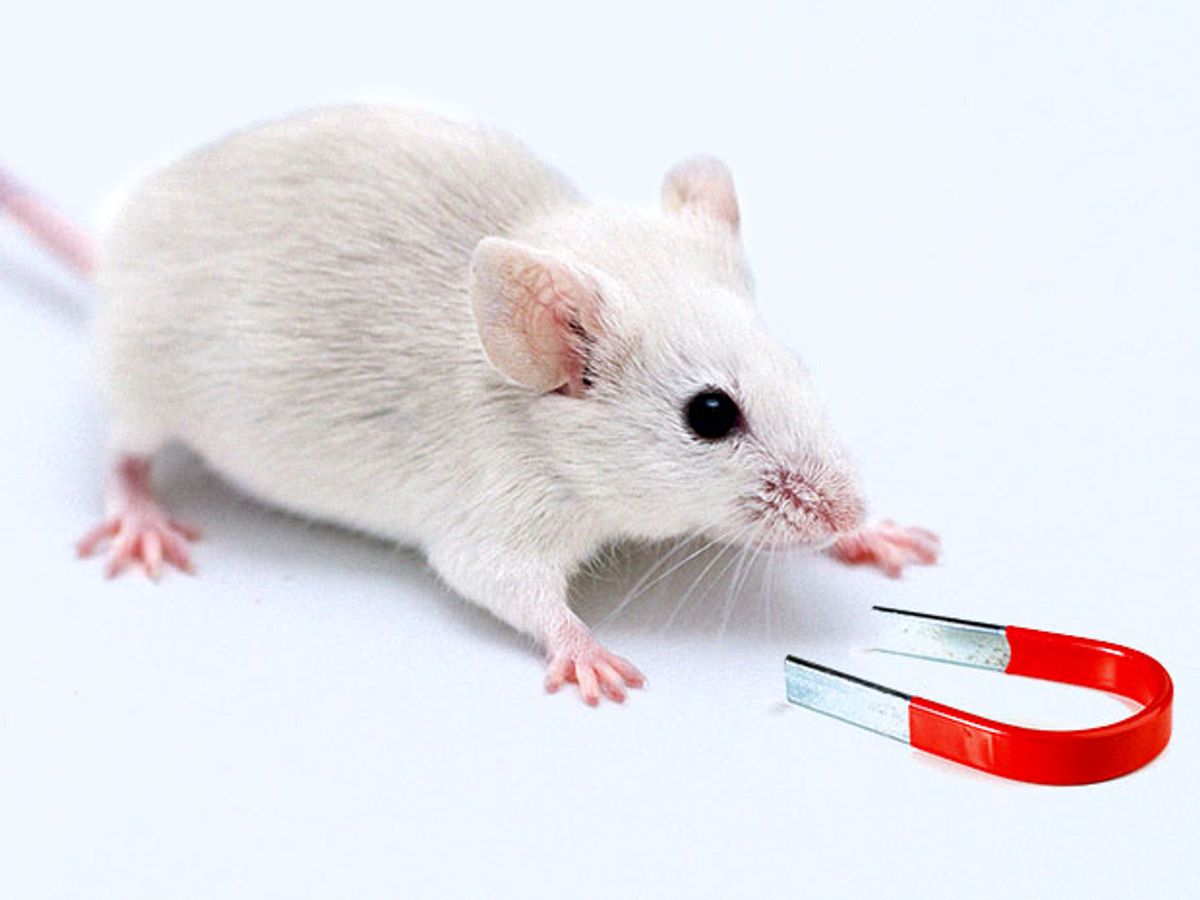Matching the brain’s machinery to behaviors and emotions was risky business throughout much of medical history. It was achievable, more or less, only through clumsy techniques such as lobotomies. Examiners who removed chunks of the brain could observe the surgery’s effects, but patients had to live with the results.
The rise of optogenetics, in which light in the form of lasers is used to manipulate individual neurons, has improved the situation slightly. But this technique still works only in regions of the brain where it’s easy to shine light. Neuroscientists must physically insert a fiber optic cable to study anything that isn’t easily accessible.
Now a team from the University of Virginia has shown that it’s possible to use a magnet to control neurons embedded deep in the brains of mice. This technique could offer a non-invasive alternative to optogenetics and aid researchers eager to understand the underpinnings of emotions or more clearly identify the origins of cognitive disorders.
By using this technique to flip genes on and off, researchers could trace neural circuits and determine which behaviors or feelings are affiliated with specific pathways in the brain. Ali Guler, a biochemist, led the group that published the results of this proof-of-concept research in the 7 March edition of Nature Neuroscience.
Guler, aware of the limits of other examination methods, wanted to find a way to remotely control neurons. His idea was to create a genetic analog to techniques used to alter cellular functions. If simple adjustments to calcium ion channels can change important processes such as muscle contraction and hormone secretion, he reasoned, why can’t we manipulate hard-to-reach areas of the brain, but with genetic switching as the trigger?
With this strategy in mind, he created a tool that linked the gene for a protein called TRPV4 (which serves as a gatekeeper for ion channels) with a gene for an iron-fixing protein called ferritin. Connecting the two genes in this way enabled his team to tug the ion channels open or push them closed simply by moving the nearby iron with a magnet.
"It's essentially a biological nanomagnet,” Guler says. He dubbed the creation “Magneto” for the Marvel comic book character capable of generating magnetic fields at will.
In one experiment, the Virginia researchers inserted the specially-designed Magneto genes in a virus, which acted as the transport medium to ferry the magnetic field–susceptible gene product to the striata of six mice. The aim: to see if they could switch ion channels open and closed in a way that might mimic the pleasurable effects of dopamine. The striatum, which processes rewards, is buried beneath the wrinkly bulk of the forebrain and has proven difficult to reach by other methods. If the technique worked, they figured, they could use Magneto in other parts of the brain to mimic different hormones and neurotransmitters. Six other mice formed the control group.
The researchers put all 12 mice into a chamber that was magnetized at one end. Their hypothesis: that the Magneto-carrying mice would scramble for the magnetized side because the open ion channels in their striata would give them a dopamine-like rush of pleasure. Indeed, they found that all six of the Magneto mice preferred to spend their time on the magnetized side of the chamber while all but one of the control mice kept to the non-magnetized end.
When Guler measured the rate at which the mice’s neurons fired, he found that the neurons in Magneto mice at the magnetized end fired more frequently than those in the untreated mice—an effect he would expect to see with true dopamine.
In the future, Guler says, this technique could be used to map neural pathways, tinker with behaviors, and compare neurons in different parts of the brain. “Similar to the optogenetic strategies, you can manipulate any group of neurons that you would like to control,” he says.
If that sounds eerie, rest assured that this power will stay confined to the lab for the time being. The synthetic genes that responded to Guler’s magnet were specially designed and built for this purpose. Magnets would not have the same effect on normal neurons in mice or people.



